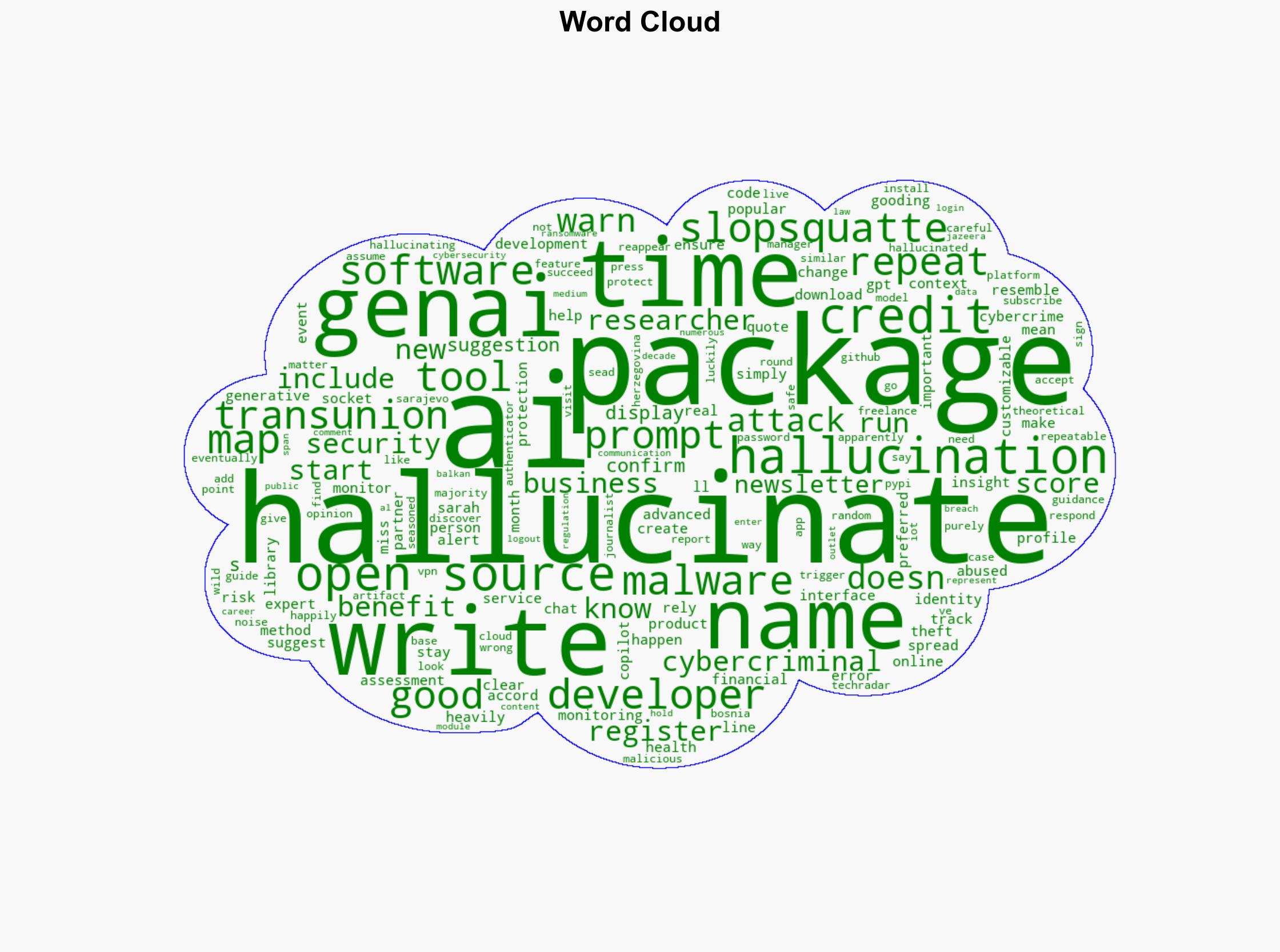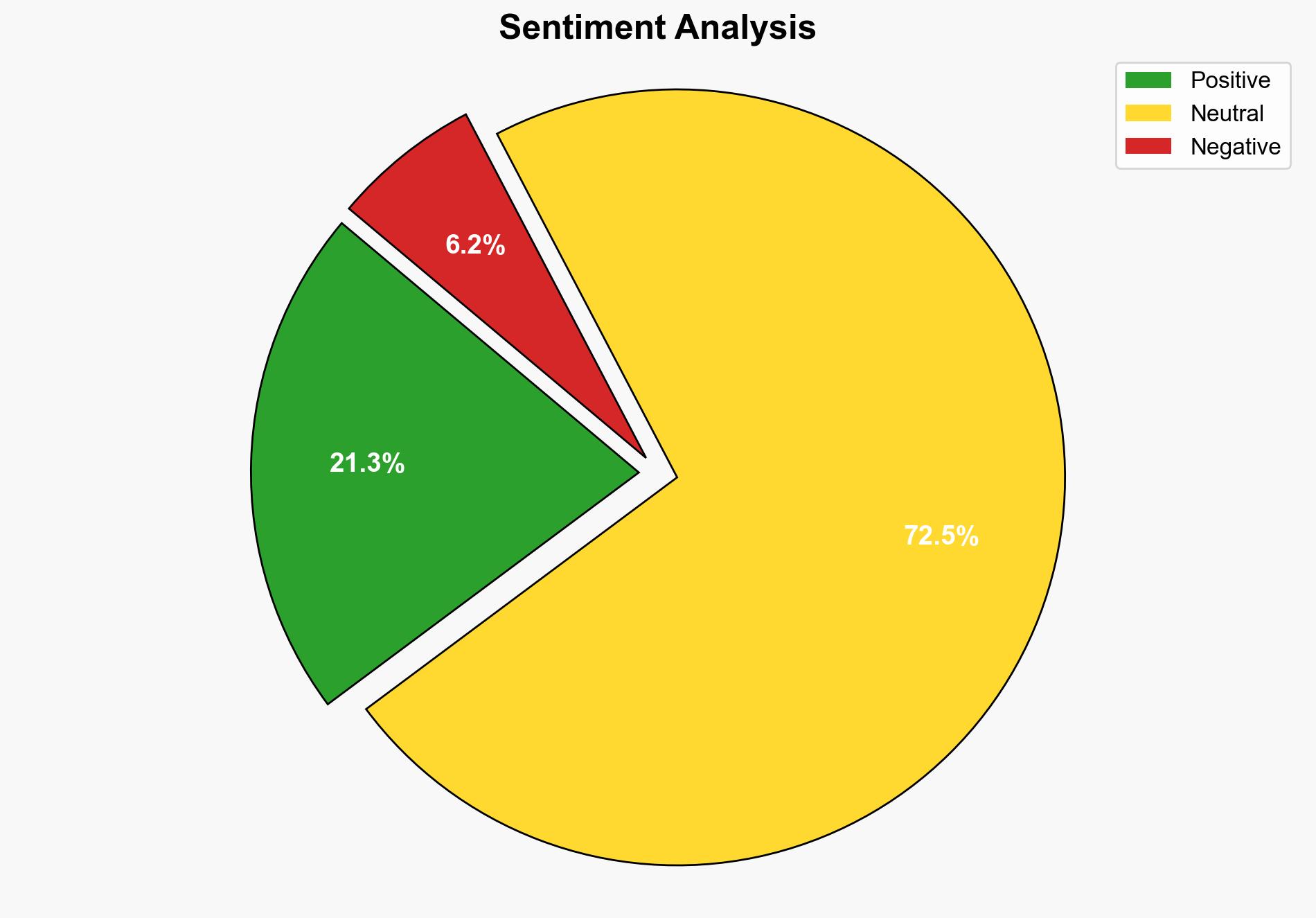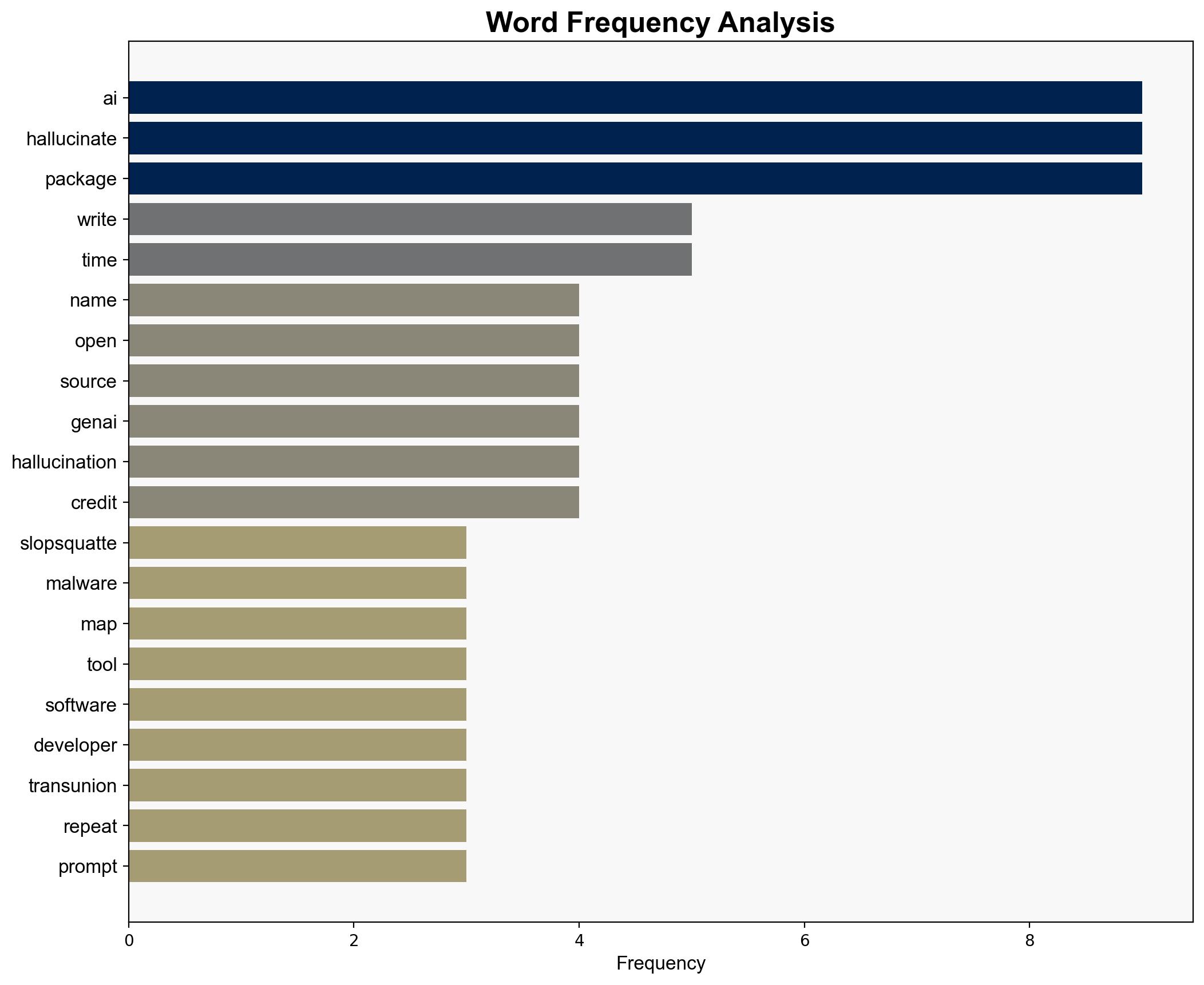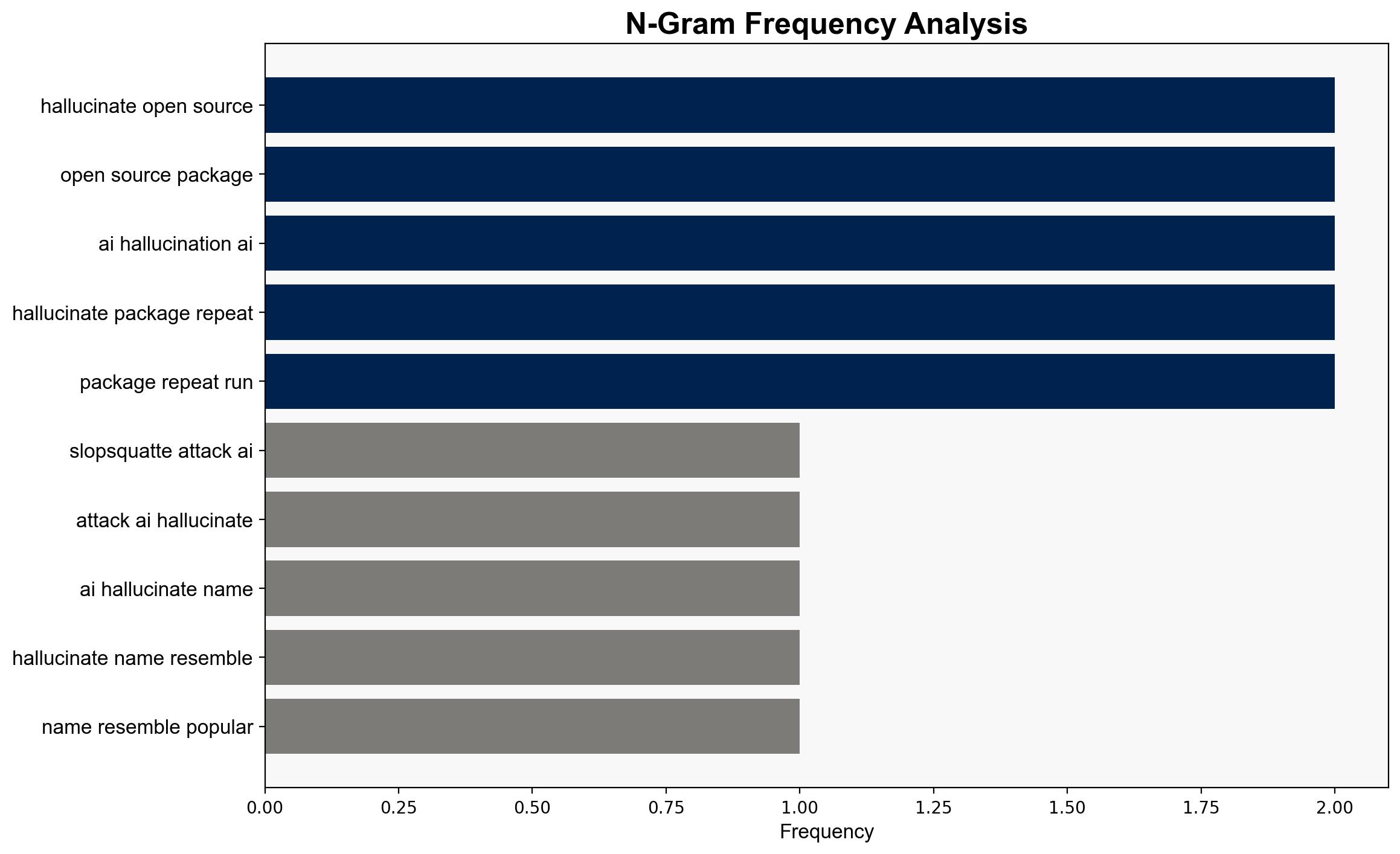Slopsquatting attacks are using AI-hallucinated names resembling popular libraries to spread malware – TechRadar
Published on: 2025-04-14
Intelligence Report: Slopsquatting Attacks Using AI-Hallucinated Names Resembling Popular Libraries to Spread Malware – TechRadar
1. BLUF (Bottom Line Up Front)
Recent developments in cybercrime have highlighted a novel method termed “slopsquatting,” where Generative AI (GenAI) tools hallucinate names of non-existent open-source software packages. Cybercriminals exploit these hallucinations by registering malicious packages under these names on platforms like GitHub and PyPI. Although no confirmed cases have been reported yet, the potential for widespread malware distribution is significant. Immediate attention to monitoring and securing software repositories is recommended to mitigate this emerging threat.
2. Detailed Analysis
The following structured analytic techniques have been applied for this analysis:
General Analysis
The phenomenon of AI hallucinations involves GenAI tools like Chat-GPT and Copilot suggesting non-existent software packages to developers. These hallucinations occur due to the AI’s tendency to generate plausible but incorrect information. Cybercriminals can exploit this by mapping out frequently hallucinated package names and registering them as malware. This method poses a significant threat as developers may unknowingly incorporate these malicious packages into their projects.
3. Implications and Strategic Risks
The strategic risks associated with slopsquatting include potential disruptions in software development processes, increased vulnerability to cyberattacks, and economic losses due to compromised systems. National security could be at risk if critical infrastructure software is affected. The trend of AI hallucinations in software development necessitates a reevaluation of current cybersecurity measures to prevent exploitation by malicious actors.
4. Recommendations and Outlook
Recommendations:
- Enhance monitoring and verification processes for software package repositories to detect and remove malicious entries promptly.
- Develop and implement AI models with improved accuracy to minimize hallucinations in software development tools.
- Encourage collaboration between cybersecurity experts and AI developers to create robust defenses against slopsquatting.
Outlook:
In the best-case scenario, increased awareness and proactive measures will prevent the widespread adoption of slopsquatting by cybercriminals. The worst-case scenario involves significant breaches in software security, leading to economic and reputational damage. The most likely outcome is a gradual increase in slopsquatting attempts, prompting the development of more sophisticated detection and prevention strategies.
5. Key Individuals and Entities
The report mentions Sarah Gooding from Socket as a key individual providing insights into the slopsquatting phenomenon. No other specific individuals or entities are highlighted in the report.





